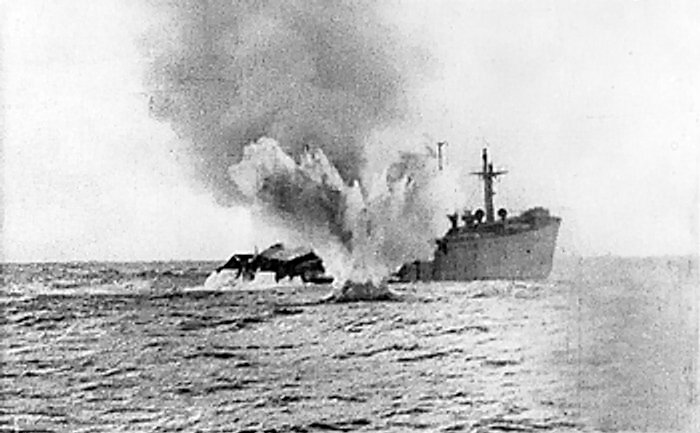Your place in the team
Although you’ll be working alongside the
Royal Navy, you won’t actually be joining
them. In fact, the Royal Fleet Auxiliary
is part of the UK Merchant Navy, which
means you will stay a civilian.
Of course, serving with the Royal Fleet
Auxiliary is a bit different from serving on a
cruise ship or an oil tanker. By keeping the
Royal Navy supplied and operational, you’ll
have a vital role in Britain’s defence and
humanitarian activities around the world.
This could mean serving in hostile waters
or regions that have suffered a major
natural or man-made disaster. To prepare
you for this, you’ll begin your career with
us in Royal Navy training bases, learning
specialist technical and military skills you
wouldn’t develop in other Merchant
Navy jobs. You’ll also earn qualifications
accredited by the Maritime & Coastguard
Agency (MCA), which will be recognised
throughout the UK shipping industry.
On many Royal Fleet Auxiliary ships, your
crewmates will include Royal Navy or Royal
Marines personnel, such as Air Engineering
Technicians looking after your ship’s
helicopters. As a civilian, though, you’ll
have to keep to Royal Fleet Auxiliary codes
of conduct, rather than military ones.
A unique purpose…
In the Royal Fleet Auxiliary, you’ll be
working with two main groups of people.
The Royal Navy will look to you to supply
and repair their warships away from home
ports and provide training facilities for
ratings and officers. Meanwhile, the
Royal Marines Commandos and the Army
will rely on you to provide them with a
floating base for their operations on shore.
Our ships are all specially designed and
equipped to carry out these crucial tasks.
You’ll serve on one of the ships in the
Royal Fleet Auxiliary fleet, which currently
has six fleet and support tankers, two
dry-cargo fleet replenishment ships, two
combined fuel and stores replenishment
ships, four landing ships, one aviation
training ship and one forward repair ship.
Almost all our ships have large flight
decks and hangars, so they can land and
carry helicopters. We use helicopters to
carry loads out to warships as part of our
supply work. Sometimes, though, you’ll
have Royal Navy anti-submarine helicopters
on board with you, or detachments of
Royal Marines Commandos or Army troops
being airlifted into action.
…and identity
You can tell Royal Fleet Auxiliary ships from
Royal Navy warships by their grey paint
and the Royal Fleet Auxiliary flag, the blue
ensign. This is a blue flag with the Union
Jack in the top-left corner and an upright
gold anchor in the centre. Royal Navy ships
fly the white ensign, while other British
Merchant Navy ships fly the red ensig









